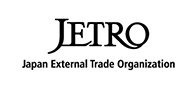Key Findings:
A complete market research report, including forecasts and market estimates, technologies analysis and developments at innovative firms within the Restaurant, Hotel & Hospitality Industry. Gain vital insights that can help shape strategy for business development, product development and investments.
Key Features:
-
Business trends analysis
-
In-depth industry overview
-
Technology trends analysis
-
Forecasts
-
Spending, investment, and consumption discussions
-
In-depth industry statistics and metrics
-
Industry employment numbers
Additional Key Features Include:
Industry Glossary
Industry Contacts list, including Professional Societies and Industry Associations
Profiles of industry-leading companies
Key Questions Answered Include:
-
How is the industry evolving?
-
How is the industry being shaped by new technologies?
-
How is demand growing in emerging markets and mature economies?
-
What is the size of the market now and in the future?
-
What are the financial results of the leading companies?
-
What are the names and titles of top executives?
-
What are the top companies and what are their revenues?
This feature-rich report covers competitive intelligence, market research and business analysis—everything you need to know about the Restaurant, Hotel & Hospitality Industry.
Plunkett Research Provides Unique Analysis of the Following Major Trends Affecting the Restaurant, Hotel & Hospitality Industry
-
Introduction to the Restaurant, Hotel & Hospitality Industry
-
McDonald’s and Other Fast-Food Companies Reposition to Adapt to New Consumer Tastes and Robotics
-
Wages Rise for Restaurant, Hotel and Hospitality Workers
-
Fast Food Faces Stiff Competition from Casual Dining Restaurants (Fast Casual/Fast Fine)
-
Food Trucks Enjoy a Boom
-
Craft/Microbreweries Proliferate
-
Grubhub, DoorDash Deliver Restaurant Meals
-
Virtual Restaurants with No Seats (Ghost Kitchens) Serve the Home Delivery Market
-
Obesity Sparks Government, School and Corporate Initiatives/Snack Foods Get Healthier
-
Retail Technologies Advance for Restaurant Online Ordering, along with Robotics and Automation
-
Cruise Industry Enjoys High Occupancy and Launches New Ships
-
Small Cruise Ships Feature Adventure, Luxury, Intimacy or Access to More Places
-
River Cruise Lines Reap the Benefits of Low Capital Investment and High Fares
-
Chinese Tourists Create Growth Opportunities for the Cruise and Hotel Industries
-
Ecotourism, Sustainable Tourism, Adventure Tourism and Volunteerism Grow as Certification Standards Are Set
-
Luxury Hotel Chains Expand Globally
-
What Millennials and Mobile-Savvy Consumers Want as Tourists and Travelers
-
Hotels Target Young Customers with Strategies Ranging from Micro Rooms and Hostels, to Hip Hotels that Encourage Mingling to Fitness Options
-
Sharing Economy Gains Market Share in Travel with Online Sites Like Airbnb, Vrbo and Many Global Competitors
-
Online Travel Agencies (OTAs)/Hotels Fight to Keep Control of the Customer
-
Localization Drives Hotel Features, Marketing
-
Dog-Friendly Hotels Gain Market Share
-
The Future of the Restaurant, Hotel & Hospitality Industry
Plunkett Research Provides In-Depth Tables for the Following Restaurant, Hotel & Hospitality Industry Statistics
-
Restaurant, Hotel & Hospitality Industry Statistics and Market Size Overview
-
Estimated U.S. Restaurant & Food Service Industry Revenues by NAICS Code: 2016-2023
-
Estimated U.S. Hotel & Accommodations Sector Quarterly Revenues: 2021-4th Quarter 2023
-
Consumer Food Price Indexes, Food Away from Home & Food at Home, U.S.: 1997-2022
-
Restaurant, Hotel and Hospitality Industry Employment by Business Type, U.S.: 2019-2024
-
Restaurant & Food Service Employment and Wage Estimates by Occupation, U.S.: May 2023


















